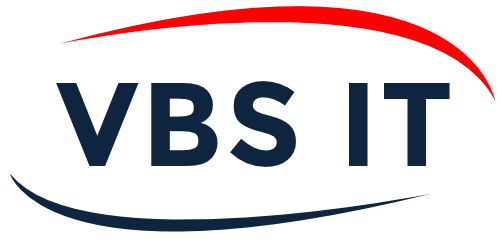Changing your managed services provider (MSP) can feel like an overwhelming decision for your business. If you’re not happy with the level of service you’re getting and it’s affecting your operations or costing too much, then it maybe time to move on. Don’t fear changing to a provider who can do more, perhaps for less. This guide simplifies the process of switching IT companies by outlining what to expect.
Why Change?
Before you jump ship, and switch to a new IT managed services provider, consider why you’re unhappy with your current provider. There are several reasons why you might consider making such a change:
Service Quality: If your current provider consistently fails to meet service level agreements (SLAs), is slow to respond, provides subpar support, and your business experiences frequent downtime due to outages or long resolution times, it’s a clear sign that you may need to switch to a provider that can deliver better quality services.
Lack of Expertise: Technology is constantly evolving, and your IT provider should stay up-to-date with the latest trends and best practices. If you find that your current provider lacks expertise in the areas that are critical to your business, such as cybersecurity or cloud computing, it may be time to find one that specializes in those areas.
Security Concerns: Security is a top priority for businesses today. If your managed services provider isn’t taking your cybersecurity seriously, or if you’ve experienced data breaches or security incidents under their watch, you should consider switching to a provider with a stronger focus on security.
Scalability Issues: As your business grows, your IT needs will evolve. If your current MSP can’t scale their services to meet your changing requirements, it’s a good reason to explore other options that can accommodate your growth.
Cost Concerns: If you’re consistently exceeding your budget with your current IT partner due to hidden fees or unexpected charges, it might be more cost-effective to look for a provider with more transparent pricing or a better pricing structure.
Communication Issues: Effective communication is crucial in a managed services relationship. If you’re finding it difficult to get in touch with your current provider, or if they are unresponsive to your requests and inquiries, it can be a major red flag.
Cultural Misalignment: The values and culture of your managed service partner should align with your own company culture. If there is a significant mismatch in values or communication styles, it can lead to a strained relationship and impact the quality of service.
Few of us like change, especially when it comes to technology and business processes. Still, migrating providers can be relatively painless when you understand the steps involved. We’re going to describe eight steps, but before you get overwhelmed, many of them aren’t ones you do directly. The MSP can handle it for you. Below is a summary of our eBook on How to Switch to a New IT Managed Services Provider (MSP). For a more complete version of our tips, please download the free eBook by clicking below:
 Switching Managed Service Providers Made Simple
Switching Managed Service Providers Made Simple
Step 1: Shop for a new MSP
Look for an IT partner that’s always available and cost effective. Select the partner that provides technical leadership and robust cybersecurity.
Step 2: Read your current contract
Before moving on to a new provider, you’ll need to review your agreement with your current provider. You want to see what steps you have to take to end the relationship. You likely need to give notice.
Step 3: Audit your existing IT
When you decide to start a new MSP relationship, they’ll need to know what your IT infrastructure entails. Don’t worry, this is a step that the MSP can take the lead on.
Step 4: Sign new contract
Once the new MSP has an overall idea of what’s involved in your engagement, they’ll draft a contract. You’ll need to be involved in this step by reviewing and signing the document.
Step 5: Give your old provider notice
Now that you know you are transitioning, follow the procedures in your previous contract to end that relationship. Depending on how you expect the MSP to take the news, you might tell them earlier. It is useful when the old and new providers can work together to ensure a smooth migration.
You don’t have to handle the notice yourself. Your new MSP can do so for you. This can be useful, as it takes a task from you. Also, it can facilitate conversations between the two providers about the transition.
Step 6: Schedule off-boarding
This is another job for the new MSP, ideally working with the old MSP. The goal is to have as little impact on your day-to-day as possible.
Step 7: Start onboarding
Expect the new MSP to want to start onboarding as soon as off-boarding is complete. This minimizes your downtime and helps make the transition easier.
Step 8: Transition your employees
Once onboarding is done, your MSP will still have work to do. They need to help your employees get used to the new IT environment.
Working with a New MSP
So, there you have it: switching MSPs in eight steps. It’s not all simple, we’ll admit that, but now you know what goes into the transition. Plus, you’ve seen that there are many steps that you don’t have to do yourself.
Not satisfied with the service from your current MSP? Take advantage of a free high value no obligation consultation.

We offer a free technology consultation. Click here to learn more.
Proud To Deliver Game-Changing IT Support in Toronto: Trust VBS
Our IT services help businesses in Toronto, Mississauga, Markham and Richmond Hill transform technology into an empowering asset for their success and profitable growth. Our expert team of friendly IT Support & Cybersecurity specialists keeps your day-to-day IT running efficiently and smoothly, while empowering your strategic success and Cybersecurity. With a unique offering that configures and integrates CRM capabilities with your existing tools and workflows, we help businesses to sharpen their competitive edge.
Curious to see the difference that VBS can deliver for your business and goals? Digital excellence is just a click away!
RELATED ARTICLES
Ask These Crucial Questions When Searching for an MSP
10 Signs It’s Time To Switch Your Managed IT Service Provider
Professional Businesses Deserve Professional Managed IT Services to Grow



